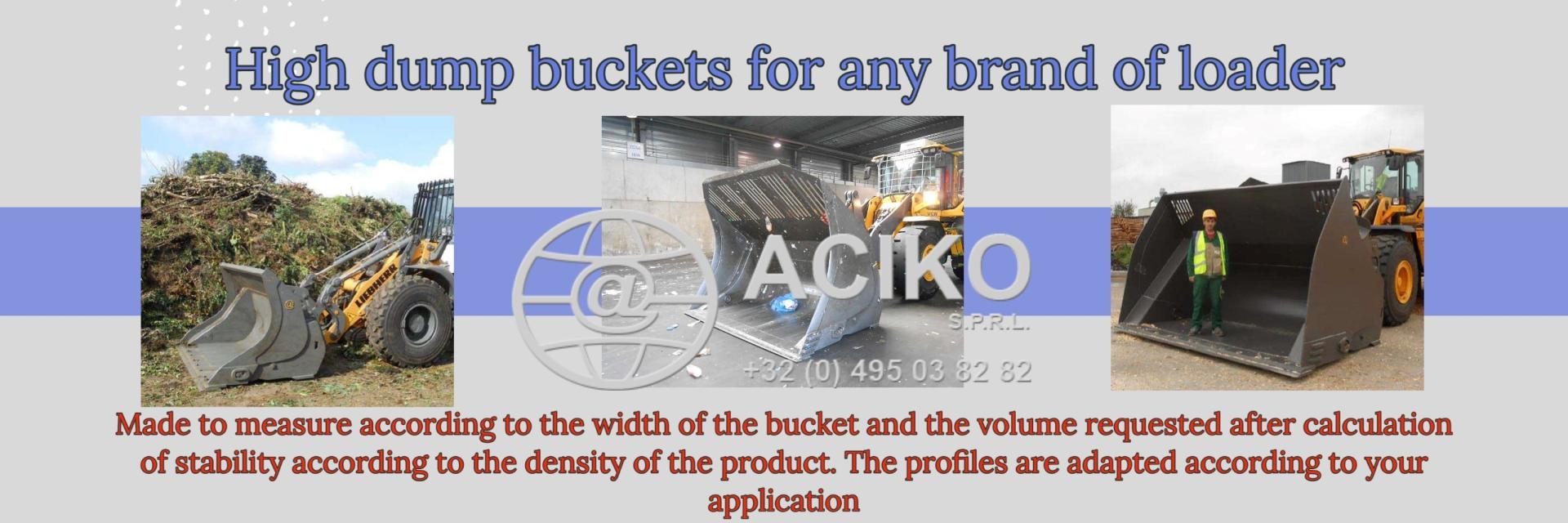Going deeper, lifting smarter: Why hoists hold the key to meeting critical mineral demand
 02/10/25-FR-English-NL-footer
02/10/25-FR-English-NL-footer
Descendre plus profond, élever plus haut : pourquoi les systèmes de levage sont la clé de l’avenir minier

 Image-Mining & Minerals, ABB Process Industries, pictured in the centre
Image-Mining & Minerals, ABB Process Industries, pictured in the centre
Le monde a faim. Faim d’énergie, faim de croissance, faim de minerais.
Hier encore, le nickel, le lithium ou le cuivre n’apparaissaient que dans les annexes austères de rapports économiques. Aujourd’hui, ils s’imposent au cœur des débats sur la sécurité énergétique, l’essor des technologies vertes et l’avenir de l’économie mondiale.
Les chiffres parlent d’eux-mêmes : la demande en nickel et terres rares a bondi de près de 8 % selon l’Agence internationale de l’énergie. L’offre de cuivre pourrait, elle, accuser un déficit de 30 % d’ici 2035. Quant à la potasse, essentielle à l’agriculture mondiale, sa consommation devrait grimper de 70 % d’ici 2050, rappelle Björn Jonsson, directeur mondial Mining & Minerals chez ABB Process Industries.
Ces pourcentages ne sont pas abstraits. Ils incarnent les câbles qui alimentent nos foyers, les batteries qui propulsent nos voitures, l’acier qui soutient nos infrastructures et les engrais qui nourrissent nos cultures. Mais pour satisfaire cette soif croissante, l’industrie minière doit désormais forer plus profond, bien au-delà des gisements de surface qui s’épuisent.
Au fond de ces entrailles de roche, parfois à plusieurs milliers de mètres sous terre, un acteur discret devient indispensable : le système de levage. Sans lui, impossible d’acheminer vers la surface les minerais essentiels qui alimentent notre monde moderne. Chaque minute d’arrêt, chaque panne, se traduit en tonnes de matière laissées sous terre et en retards accumulés.
Pourquoi descendre plus profond change la donne
Les méthodes de transport traditionnelles — camions, convoyeurs — montrent vite leurs limites à de telles profondeurs : coûts énergétiques exorbitants, pertes mécaniques, temps de trajet interminables.
À l’inverse, le levage vertical s’impose comme une solution taillée pour ces défis : empreinte au sol réduite, rendement énergétique supérieur, capacité à transporter des charges massives. Aujourd’hui déjà, certains treuils à friction déplacent jusqu’à 75 tonnes de minerai à près de 18 mètres par seconde.
Mais plus on s’enfonce dans la terre, plus la complexité grandit. La question n’est plus seulement comment lever, mais comment réinventer le levage pour l’adapter aux défis humains, techniques et environnementaux du XXIe siècle.
Les obstacles à franchir
Transformer les systèmes de levage n’est pas qu’une affaire de technologie.
C’est aussi un défi humain. La pénurie de compétences spécialisées frappe de plein fouet les mines, souvent situées dans des régions reculées. Et lorsque l’expertise est là, la résistance culturelle peut freiner le changement. Les équipes de maintenance, piliers historiques des sites miniers, regardent parfois avec scepticisme l’arrivée d’outils numériques : peur pour leur emploi, crainte face à des systèmes perçus comme complexes, ou simple attachement à des méthodes éprouvées.
Ces obstacles exigent une approche fine. Les nouvelles plateformes digitales doivent être intuitives, accessibles à tous, comparables dans leur simplicité à un smartphone. Car un outil, aussi puissant soit-il, ne vaut rien s’il reste incompris ou inutilisé.
Des solutions pour durer
Un système de levage n’est pas un actif à court terme. Conçu pour durer des décennies, il peut souvent survivre à la mine elle-même. Sa fiabilité dépasse 90 % même dans des conditions extrêmes, et lorsqu’un gisement est épuisé, il peut être rénové et réinstallé ailleurs.
C’est là que l’intelligence artificielle et la maintenance prédictive changent la donne. Passer d’une logique réactive — réparer quand ça casse — à une approche proactive permet non seulement de réduire les arrêts coûteux, mais aussi de prolonger la durée de vie des équipements bien au-delà des standards actuels.
L’enjeu n’est pas seulement économique, il est aussi environnemental. Le transport du minerai représente l’une des activités les plus énergivores de l’exploitation minière. Et si le levage est déjà l’option la plus efficiente, son empreinte carbone dépend largement de son mode de conception et d’utilisation. Une analyse menée par ABB a révélé que l’électricité consommée, suivie par l’usure des câbles et des plaques de guidage, représente la principale source d’impact. En optimisant ces éléments, il est possible d’économiser jusqu’à 266 000 tonnes de CO₂e sur 25 ans — l’équivalent des émissions annuelles de 2 500 voitures ou de la consommation énergétique de 1 300 foyers.
Ici, efficacité et durabilité avancent main dans la main. Des câbles plus légers et plus résistants, comme ceux développés avec Bridon-Bekaert Ropes Group, réduisent à la fois les besoins en énergie et les coûts de maintenance, tout en renforçant la sécurité.
Vers les mines du futur
Les innovations se concrétisent déjà. En Suède, à Kiruna, la plus grande mine de fer souterraine du monde, huit treuils ont récemment été modernisés. En intégrant mécanique, électricité et automatisation, ils offrent désormais une productivité accrue avec une consommation d’énergie réduite.
Ce type de projet illustre une réalité : les treuils de demain ne seront pas de simples machines mécaniques, mais des systèmes intégrés, digitaux et durables, capables d’accompagner l’industrie minière vers de nouveaux horizons.
Et après ?
La demande en minerais critiques grimpe, les coûts s’envolent, la pression environnementale s’intensifie. L’avenir appartient aux systèmes de levage conçus pour être sûrs, fiables, bas-carbone et centrés sur l’humain.
C’est pourquoi ABB investit non seulement dans le treuil lui-même, mais aussi dans tout l’écosystème qui l’entoure : maintenance prédictive, plateformes connectées, innovations collaboratives comme EcoHoist pour des solutions à faible coût, ou encore la reconversion des puits en stockage d’énergie avec Gravitricity.
Ainsi, le savoir-faire en matière de levage ne se limite plus à extraire les ressources de la Terre : il contribue aussi à préparer la transition énergétique mondiale.
Parce qu’au cœur de l’avenir minier, il y aura toujours un système de levage — plus intelligent, plus sûr, plus durable.
NJC.© Info Björn Jonsson, Global Business Line Manager, Mining & Minerals, ABB Process Industries
-----------------------------------------------------------------------------------------------------------------
 02/10/25-English
02/10/25-English
Go Deeper, Lift Higher: Why Lifting Systems Are Key to the Future of Mining

 Image-Mining & Minerals, ABB Process Industries, pictured in the centre
Image-Mining & Minerals, ABB Process Industries, pictured in the centre
The world is hungry. Hungry for energy, hungry for growth, hungry for minerals.
Until recently, nickel, lithium, and copper appeared only in the austere appendices of economic reports. Today, they are at the heart of debates on energy security, the rise of green technologies, and the future of the global economy.
The figures speak for themselves: demand for nickel and rare earths has jumped by nearly 8% according to the International Energy Agency. Copper supply could fall by 30% by 2035. As for potash, essential to global agriculture, its consumption is expected to increase by 70% by 2050, points out Björn Jonsson, Global Director of Mining & Minerals at ABB Process Industries.
These percentages are not abstract. They embody the cables that power our homes, the batteries that power our cars, the steel that supports our infrastructure, and the fertilizers that nourish our crops. But to satisfy this growing thirst, the mining industry must now drill deeper, well beyond the dwindling surface deposits.
Deep within these rocky bowels, sometimes several thousand meters underground, a discreet player becomes indispensable: the lifting system. Without it, it would be impossible to transport the essential minerals that fuel our modern world to the surface. Every minute of downtime, every breakdown, translates into tons of material left underground and accumulated delays.
Why going deeper changes the game
Traditional transportation methods—trucks, conveyors—quickly reveal their limitations at such depths: exorbitant energy costs, mechanical losses, and interminable travel times. Conversely, vertical lifting is emerging as a tailored solution to these challenges: reduced footprint, superior energy efficiency, and the ability to transport massive loads. Already today, some friction hoists move up to 75 tons of ore at nearly 18 meters per second.
But the deeper you go into the earth, the more complex it becomes. The question is no longer just how to lift, but how to reinvent lifting to adapt it to the human, technical, and environmental challenges of the 21st century.
The Obstacles to Overcome
Transforming lifting systems isn't just a matter of technology.
It's also a human challenge. The shortage of specialized skills is hitting mines, often located in remote regions, hard. And when the expertise is available, cultural resistance can hamper change. Maintenance teams, the historical pillars of mining sites, sometimes view the arrival of digital tools with skepticism: fear for their use, fear of systems perceived as complex, or simply a commitment to proven methods.
These obstacles require a sophisticated approach. New digital platforms must be intuitive, accessible to all, comparable in their simplicity to a smartphone. Because a tool, no matter how powerful, is worthless if it remains misunderstood or unused.
Solutions to last
A hoisting system is not a short-term asset. Designed to last for decades, it can often outlive the mine itself. Its reliability exceeds 90% even in extreme conditions, and when a deposit is depleted, it can be renovated and reinstalled elsewhere.
This is where artificial intelligence and predictive maintenance are game-changers. Moving from a reactive approach—fix it when it breaks—to a proactive approach not only reduces costly downtime, but also extends equipment lifespan well beyond current standards.
The challenge is not only economic, but also environmental. Ore transportation is one of the most energy-intensive activities in mining. And while hoisting is already the most efficient option, its carbon footprint depends largely on its design and use. An analysis conducted by ABB revealed that electricity consumption, followed by wear and tear on cables and guide plates, represents the main source of impact. Optimizing these elements could save up to 266,000 tons of CO₂e over 25 years—the equivalent of the annual emissions of 2,500 cars or the energy consumption of 1,300 homes.
Here, efficiency and sustainability go hand in hand. Lighter and stronger cables, such as those developed with Bridon-Bekaert Ropes Group, reduce both energy requirements and maintenance costs, while improving safety.
Towards the mines of the future
Innovations are already taking shape. In Sweden, at Kiruna, the world's largest underground iron ore mine, eight hoists were recently modernized. By integrating mechanics, electricity, and automation, they now offer increased productivity with reduced energy consumption.
This type of project illustrates a reality: the hoists of tomorrow will not be simple mechanical machines, but integrated, digital, and sustainable systems capable of supporting the mining industry to new horizons.
What's next?
Demand for critical minerals is rising, costs are soaring, and environmental pressures are intensifying. The future belongs to lifting systems designed to be safe, reliable, low-carbon, and human-centered.
That's why ABB is investing not only in the hoist itself, but also in the entire ecosystem that surrounds it: predictive maintenance, connected platforms, collaborative innovations like EcoHoist for low-cost solutions, and the conversion of wells into energy storage with Gravitricity.
Thus, hoisting expertise is no longer limited to extracting the Earth's resources: it also contributes to preparing for the global energy transition.
Because at the heart of the mining future, there will always be a hoisting system—smarter, safer, more sustainable.
NJC.© Info Björn Jonsson, Global Business Line Manager, Mining & Minerals, ABB Process Industries
-----------------------------------------------------------------------------------------------------------------
 02/10/25-NL
02/10/25-NL
Ga dieper, til hoger: Waarom hefsystemen essentieel zijn voor de toekomst van de mijnbouw

 Image-Mining & Minerals, ABB Process Industries, pictured in the centre
Image-Mining & Minerals, ABB Process Industries, pictured in the centre
De wereld heeft honger. Honger naar energie, honger naar groei, honger naar mineralen.
Tot voor kort verschenen nikkel, lithium en koper alleen in de sobere bijlagen van economische rapporten. Vandaag de dag staan ze centraal in debatten over energiezekerheid, de opkomst van groene technologieën en de toekomst van de wereldeconomie.
De cijfers spreken voor zich: de vraag naar nikkel en zeldzame aardmetalen is met bijna 8% gestegen volgens het Internationaal Energieagentschap. Het koperaanbod zou tegen 2035 met 30% kunnen dalen. Wat betreft kalium, essentieel voor de wereldwijde landbouw, zal het verbruik naar verwachting met 70% stijgen tegen 2050, benadrukt Björn Jonsson, Global Director of Mining & Minerals bij ABB Process Industries.
Deze percentages zijn niet abstract. Ze omvatten de kabels die onze huizen van stroom voorzien, de accu's die onze auto's aandrijven, het staal dat onze infrastructuur ondersteunt en de meststoffen die onze gewassen voeden. Maar om deze groeiende dorst te lessen, moet de mijnbouw nu dieper boren, ver voorbij de slinkende oppervlaktelagen.
Diep in deze rotsachtige diepten, soms wel duizenden meters onder de grond, wordt een discrete speler onmisbaar: het hefsysteem. Zonder dit systeem zou het onmogelijk zijn om de essentiële mineralen die onze moderne wereld van brandstof voorzien naar de oppervlakte te transporteren. Elke minuut stilstand, elke storing, vertaalt zich in tonnen materiaal dat onder de grond achterblijft en opgelopen vertragingen.
Waarom dieper graven het spel verandert
Traditionele transportmethoden – vrachtwagens, transportbanden – tonen al snel hun beperkingen op zulke diepten: exorbitante energiekosten, mechanische verliezen en eindeloze reistijden. Daarentegen ontwikkelt verticaal heffen zich als een oplossing op maat voor deze uitdagingen: een kleinere voetafdruk, superieure energie-efficiëntie en de mogelijkheid om enorme ladingen te vervoeren. Sommige frictiehijskranen verplaatsen nu al tot 75 ton erts met bijna 18 meter per seconde.
Maar hoe dieper je de aarde ingaat, hoe complexer het wordt. De vraag is niet langer alleen hoe te tillen, maar hoe het tillen opnieuw uit te vinden en aan te passen aan de menselijke, technische en ecologische uitdagingen van de 21e eeuw.
De obstakels die overwonnen moeten worden
Het transformeren van hefsystemen is niet alleen een kwestie van technologie.
Het is ook een menselijke uitdaging. Het tekort aan gespecialiseerde vaardigheden treft mijnen, vaak gelegen in afgelegen gebieden, hard. En wanneer de expertise wel beschikbaar is, kan culturele weerstand verandering belemmeren. Onderhoudsteams, de historische pijlers van mijnbouwlocaties, bekijken de komst van digitale tools soms met scepsis: angst voor het gebruik ervan, angst voor systemen die als complex worden ervaren, of simpelweg een toewijding aan bewezen methoden.
Deze obstakels vereisen een geavanceerde aanpak. Nieuwe digitale platforms moeten intuïtief en voor iedereen toegankelijk zijn, vergelijkbaar in eenvoud met een smartphone. Want een tool, hoe krachtig ook, is waardeloos als hij verkeerd begrepen of ongebruikt blijft.
Oplossingen die lang meegaan
Een hefsysteem is geen kortdurend bezit. Ontworpen om tientallen jaren mee te gaan, kan het vaak de mijn zelf overleven. De betrouwbaarheid bedraagt zelfs onder extreme omstandigheden meer dan 90%. Wanneer een afzetting uitgeput is, kan deze worden gerenoveerd en elders opnieuw worden geïnstalleerd.
Hier zijn kunstmatige intelligentie en voorspellend onderhoud baanbrekend. De overstap van een reactieve aanpak – repareren wanneer het kapot gaat – naar een proactieve aanpak vermindert niet alleen kostbare downtime, maar verlengt ook de levensduur van apparatuur tot ver boven de huidige normen.
De uitdaging is niet alleen economisch, maar ook ecologisch. Ertstransport is een van de meest energie-intensieve activiteiten in de mijnbouw. En hoewel hijsen al de meest efficiënte optie is, hangt de CO₂-voetafdruk ervan grotendeels af van het ontwerp en gebruik. Uit een analyse van ABB bleek dat het elektriciteitsverbruik, gevolgd door slijtage van kabels en geleideplaten, de belangrijkste bron van impact is. Optimalisatie van deze elementen kan in 25 jaar tijd tot 266.000 ton CO₂e besparen – het equivalent van de jaarlijkse uitstoot van 2500 auto's of het energieverbruik van 1300 huishoudens.
Hier gaan efficiëntie en duurzaamheid hand in hand. Lichtere en sterkere kabels, zoals die ontwikkeld in samenwerking met Bridon-Bekaert Ropes Group, verlagen zowel het energieverbruik als de onderhoudskosten en verbeteren tegelijkertijd de veiligheid.
Op weg naar de mijnen van de toekomst
Innovaties beginnen al vorm te krijgen. In Zweden, in Kiruna, 's werelds grootste ondergrondse ijzerertsmijn, zijn onlangs acht hijskranen gemoderniseerd. Door mechanica, elektriciteit en automatisering te integreren, bieden ze nu een hogere productiviteit met een lager energieverbruik.
Dit soort projecten illustreert een realiteit: de hijskranen van morgen zullen geen simpele mechanische machines zijn, maar geïntegreerde, digitale en duurzame systemen die de mijnbouw naar nieuwe horizonnen kunnen ondersteunen.
Wat is de volgende stap?
De vraag naar kritieke mineralen stijgt, de kosten stijgen en de milieudruk neemt toe. De toekomst is aan hijskranen die ontworpen zijn om veilig, betrouwbaar, koolstofarm en mensgericht te zijn.
Daarom investeert ABB niet alleen in de hijskraan zelf, maar ook in het hele ecosysteem eromheen: voorspellend onderhoud, connected platforms, collaboratieve innovaties zoals EcoHoist voor voordelige oplossingen en de omzetting van putten naar energieopslag met Gravitricity.
Hijsexpertise beperkt zich dus niet langer tot het ontginnen van de aardse grondstoffen: het draagt ook bij aan de voorbereiding op de wereldwijde energietransitie.
Want de kern van de mijnbouwtoekomst zal altijd een hijssysteem zijn – slimmer, veiliger en duurzamer.
NJC.© Info Björn Jonsson, Global Business Line Manager, Mining & Minerals, ABB Process Industries
---------------------------------------------------------------------------------------------------------------
Date de dernière mise à jour : 01/10/2025
















